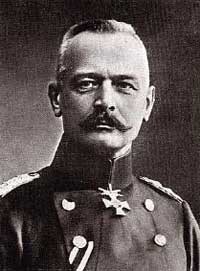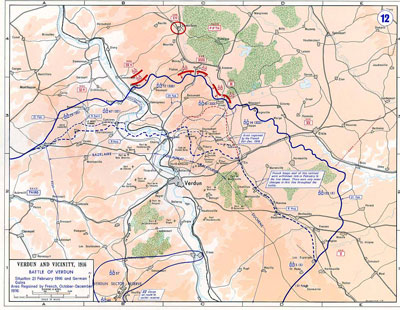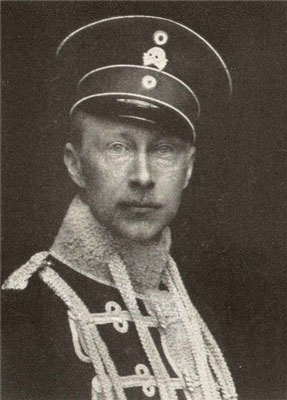
WWII: Maginot Line | Normandy | V-Weapon Sites | Arnhem
Further afield: Crete
| Home Tracing Military Ancestors Travel Advice CWGC Cemeteries Iron Harvest News Book Reviews Glossary Links Contact Me Verdun:
 
|
Verdun – A Brief HistoryContents
The PlanTo the French, whose young men died by their tens of thousands in the ravines and on the ridges east of the Meuse, the Battle of Verdun was to assume an almost mystical reverence and symbolism in the lexicon of the First World War. Begun as an attempt by the German Chief of Staff, General Erich von Falkenhayn, to conduct a limited offensive to draw French reserves into a battle of attrition, Verdun ultimately became one of the most bitter and bloody battles of the entire war. Fought out for the best part of a year, it was eventually to result in hundreds of thousands of casualties on both sides.
As the British Army grew in size and material superiority throughout 1915, Falkenhayn realised that in 1916 he would have to launch an offensive of his own to trump any likely Allied one. He reasoned that until the full power of the British Empire was deployed, the best weapon the British had was the French Army. With the Eastern Front entering a period of stalemate he seized his opportunity and chose a location on the Western Front to launch his offensive against the French. At Verdun, in a salient surrounded by German positions, Falkenhayn would concentrate his artillery and create a "killing ground" in which successive waves of defenders would be annihilated.
Verdun was not new to war. A key crossing point over the River Meuse, it had been a major border fortress and barracks for the French Army since the 17th Century and the days of the great French fortress engineer, Vauban. It had put up a stubborn defence during the Franco-Prussian War of 1870-71 and had held again when the latest German invasion rumbled across northern France. The secret of its success lay in the range of hills, the "Hauts de Meuse", which rose up to the east of the city and the concentric rings of forts which defended approaches from every direction. Falkenhayn believed the French would not allow such a potent symbol of their military prowess to fall and would throw every man into its defence. He wrote that if the French fell into his trap, "the forces of France will bleed to death".
Comprising the Fifth Army, German forces around Verdun were commanded by the Kaiser's son and heir to the throne, Crown Prince Wilhelm (or "Little Willie" as the British wryly coined him). To do the work of execution that Falkenhayn demanded, 1,220 guns were concentrated in great secrecy east and west of the Meuse, including some of the largest guns in the German arsenal – the 380 and 420mm naval guns and howitzers which had crushed the Belgian forts earlier in the war. |


